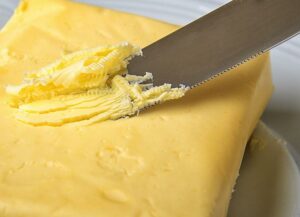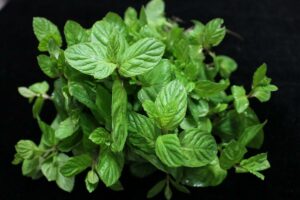Julianne Rezende
Choline is an essential nutrient with a complex role in the body. It is involved in cell membrane signaling (phospholipids), neurotransmitter synthesis (acetylcholine), methyl group metabolism (homocysteine reduction), plays a role in 1-Carbon metabolism, and in the transport of lipids (lipoproteins).
Some studies have identified that fatty liver in dairy cows during the peripartum period occurs because of the increased absorption of fatty acids by the liver, resulting in re-esterification to triacylglycerols due to the slow export rate of lipoproteins by the bovine liver.
A recent meta-analysis conducted by University of Florida researchers (Arshad et al., 2020) evaluated whether rumen protected choline (RPC) supplementation in dairy cows during the transition period would improve health and lactation post-calving. Also, the authors estimated the optimal amount of choline to supplement dairy cows for improving postpartum productive performance. This meta-analysis included 21 experiments, with 66 treatments and 1,313 prepartum cows.
In addition, the project aimed to clarify whether responses to RPC depended on the prepartum energy content of the diet, and if the pre- and postpartum supply of metabolizable methionine as choline and methionine were involved in the metabolism of 1-carbon (making it possible to determine if choline responses depended on the supply of methionine).
The experiments included in this meta-analysis used between 5.6 to 25.2 g/d of supplementary choline, with an average inclusion rate of 12.9 g/cow/d. The duration of pre- and postpartum feeding of RPC averaged 22 and 57 days, respectively.
Adding choline to the diet made the cows consume more DM
It was observed that increased choline supplementation during the transition period linearly increased dry matter (DM) intake. Supplementing 12.9 g/d of choline resulted in an increase in DM intake of 0.2 kg/day. For body weight (BW), an increase of 23 kg was observed when choline supplementation increased from 0 to 12.9 g/d. Similarly, body condition (BCS) increased by 0.08 units within the same range.
During post-calving DM intake increased by 0.5 kg/d when RPC supplementation increased from 0 to 12.9 g/d. Similarly, for BW and BCS there was an increase of 30 kg and 0.09 units, respectively.
Effects of protected choline on productive parameters
Milk, milk fat, milk protein, and energy-corrected-milk (ECM) yield increased linearly by 1.6 kg/d, 0.07 kg/d, 0.05 kg/d, and 1.7 kg/d respectively, when the cows were supplemented with 12.9 g/d of choline. Moreover, supplementation at this rate increased feed efficiency approximately by 12.0%.
Feeding 12.9 g/d of choline increased glucose concentrations before and after the postpartum period by 0.05 and 0.04 mM, respectively, while fatty acid concentrations were reduced during the postpartum period by 0.08 mM. Between the linear effect of choline and the net energy for lactation (NEL) of the prepartum diet, an interaction in fatty acids was observed before and after delivery.
With regards to the incidence of liver triacylglycerol and metabolic problems, choline supplementation reduced the risk of retained placenta and mastitis but had no effects on metritis, milk fever, displaced abomasum, and ketosis. In some studies, choline supplementation did not affect postpartum liver triacylglycerol; however, it was observed a tendency for choline to decrease the concentrations of glycogen in the liver in postpartum cows.
Conclusions
This study showed that RPC supplementation increases DM intake before and after calving and improves milk, ECM, fat, and protein yields in dairy cows. In most experiments in transition cows, the optimal amount of choline to supplement is probably more than 12.9 g/d. This suggests the need for more studies to understand the benefits of choline in non-lactating cows.
Reference
U. Arshad, M. G. Zenobi, C. R. Staples, and J. E. P. Santos. 2020. Meta-analysis of the effects of supplemental rumen-protected choline during the transition period on performance and health of parous dairy cows. J. Dairy Sci. 103:282–300.
© 2020 Dairy Knowledge Center. All Rights Reserved.









